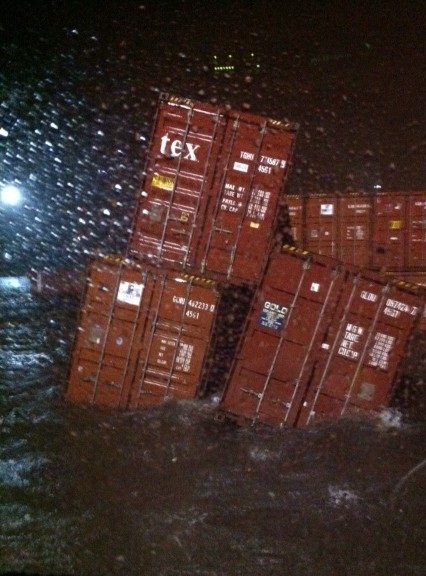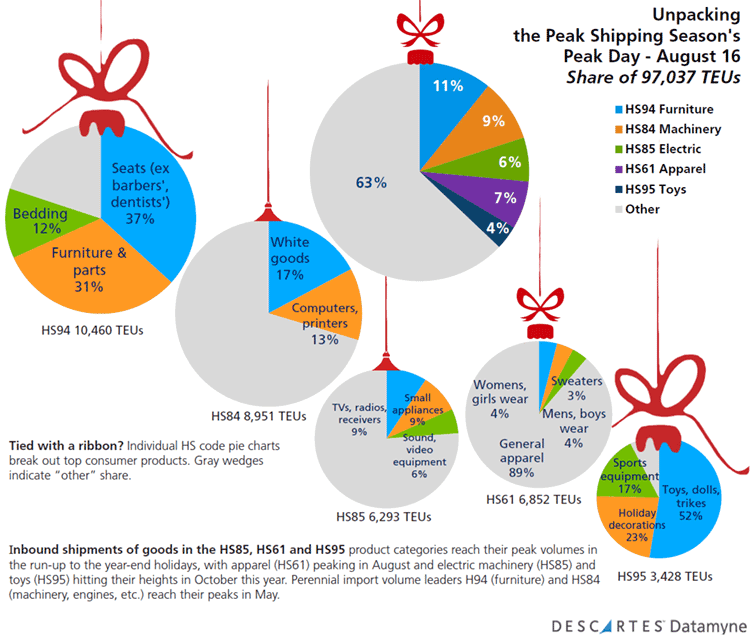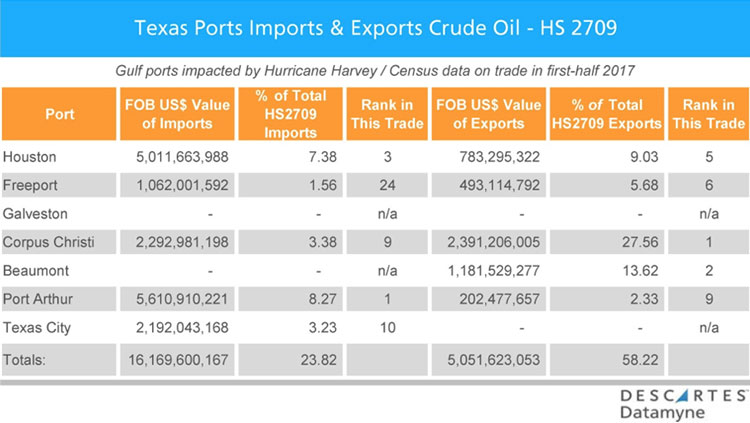Despite preparation, no way to hold back water, no way (yet) to reckon loss
by Bill Armbruster, blog anchor
The Port Authority of New York-New Jersey began preparing for Sandy days before the storm hit. The plans included warnings to terminal operators to secure their equipment and to unstack containers, especially empty boxes, to reduce the risk of getting knocked down by the wind. The terminals worked as many shifts as possible before the storm hit so ships could get in and out. Carriers were told to keep their ships at sea, and some diverted to other ports.
Nobody could hold back the water, however. The port authority’s own administration building was flooded with three and a half feet of water, Richard M. Larrabee, director of port commerce, noted.
Still, the advance preparation and the dedication of workers from both public and private entities who were back on the job assessing the damage and clearing debris the morning after the super storm hit landfall mitigated the losses and enabled some of them to recover relatively quickly. Maher Terminals and the APM Terminal in Elizabeth, N.J., received their first ships the night of November 4, six days after Sandy lashed the region, and all container terminals in the bi-state port were handling vessels later that week.
“Everybody understood what they had to do. We had excellent cooperation from both the port authority and the private sector,” said Charles Rowe, a Coast Guard spokesman, noting that no commercial vessels sank during the storm. The Coast Guard is doing a thorough review of Sandy, looking at everything from operations to administrative procedures, said Rowe, adding that he had no idea how long the review might take.
The worst-hit businesses in the port included the Toyota and FAPS auto terminals in Port Newark. Toyota had to scrap 2,773 vehicles parked at its terminal, said Jana Hartline, a Toyota spokeswoman. The terminal received its first ship on November 9. Hartline said it was too early to determine lessons learned from the storm. “We’re still in the process of accumulating that data,” she said.
Read more on initial lessons from Sandy here.
It will take many more weeks, and perhaps months, for some businesses to fully recuperate because of the cost and time required to repair and replace some equipment, and some may never recover.
James Craig, president of the American Institute of Marine Underwriters, said he had no sense yet of the losses for maritime and port-related businesses, noting that his office on 14 Wall Street in Manhattan was among those affected. “We just got our phones back,” he said in an interview 15 days after Sandy socked the region.
For a quick look at the US imports that move through the Port of NY-NJ, download Datamyne’s free report here.

Hurricane Sandy knocked containers around “like so many matchsticks.” Photo from New York Container Terminal (NYCT) on Staten Island
 Bill Armbruster, the anchor for the Datamyne Blog has covered shipping and trade for 30 years as a reporter and editor with The Journal of Commerce and Shipping Digest. “I’ll be blogging on headline news and current issues in oceangoing commerce, trying to shed some light on the backstories and, wherever I can, supply some sound advice for shippers.” Write Bill care of [email protected].
Bill Armbruster, the anchor for the Datamyne Blog has covered shipping and trade for 30 years as a reporter and editor with The Journal of Commerce and Shipping Digest. “I’ll be blogging on headline news and current issues in oceangoing commerce, trying to shed some light on the backstories and, wherever I can, supply some sound advice for shippers.” Write Bill care of [email protected].
The opinions expressed in this article are those of its author and do not purport to reflect the opinions or views or Descartes Datamyne. In addition, this article is for general information purposes only and it’s not intended to provide legal advice or opinions of any kind and my not be used for professional or commercial purposes. No one should act, or refrain from acting, based solely on this article without first seeking appropriate legal or other professional advice.





